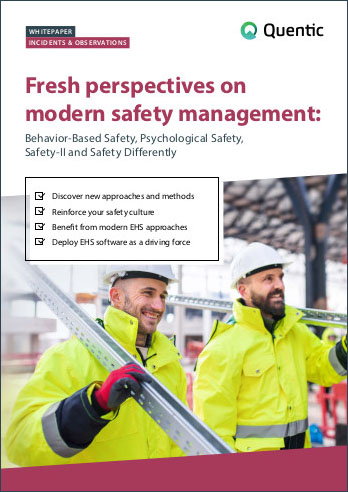6 min05/04/2023
Behavior-based safety (BBS) is so popular because it is scientifically based and very effective. It is considered one of the most important developments in the Safety Management Trend Report 2021. It complements traditional health and safety practices with proactive approaches and methods. Employees develop a strong awareness of hazards and are encouraged to work safely.
In our interview with Prof. Christoph Bördlein, you can find out why experts and managers should move away from rigid concepts, what employees can contribute and what role digital tools play. He is a trained psychologist and teaches at the Technical University of Applied Sciences Würzburg-Schweinfurt. He has been involved with behavior-based safety for more than 20 years, written several books on the subject, and leads the certificate course "Specialist for Behavior-Based Safety (BBS)."





